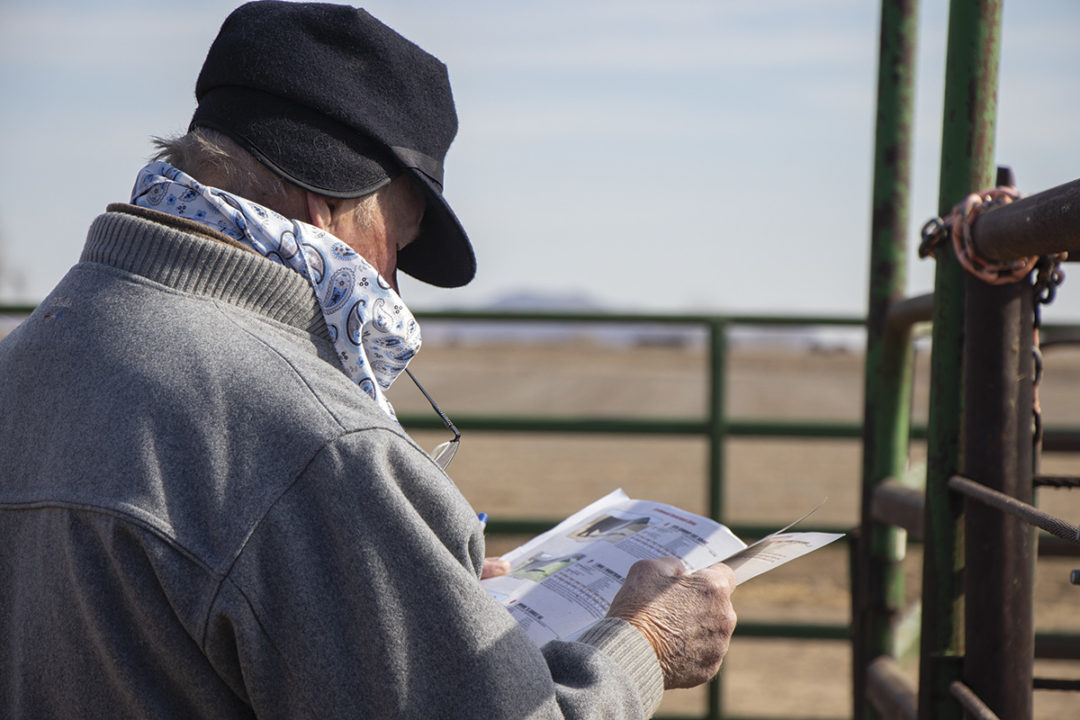Purchasing a bull is one of the most consequential decisions a cow-calf operation can make. Bulls play an outsized role in the long-term genetic progress of our herds, especially when females are retained. This means that when we get the bull-buying process right, it can have an enormous positive impact on a herd, both in the short term (a more productive calf crop) and the long term (generating long-lived and productive daughters). Of course, the inverse is also true: A poor bull purchase can derail a herd’s genetic progress for multiple years. It’s important that we use as much information as possible to mitigate the risk of this high-stakes decision. Luckily, we have a wide array of tools available for mitigating risk and making better breeding decisions.
As we gear up for the spring bull buying season, I wanted to take this opportunity to walk through how I think about the sire selection process. I’ll also toss in some common mistakes that get made along the way and tools we can use to avoid them.
Make a plan
Before we crack open a bull sale catalog, it’s crucial that we know what we’re looking for. The selection decisions we make need to be aligned with our herd’s breeding goals: focused on improving profitability through our sources of revenue (e.g., weaned calf weight or end product quantity/quality) and costs (e.g., replacement heifer development, cow nutritional needs). Breeding decisions for a herd selling weaned calves and retaining replacement females will be different from a herd that retains ownership and markets on a grid.
Common mistake: All too often, I see commercial producers locked in on purchasing bulls from the same breed year in and year out. When we fail to take advantage of breed complementarity and heterosis through crossbreeding, we’re leaving money on the table through lost performance. It is also worth mentioning that selecting the ideal breed for our crossbreeding program should come before we even start the search for a bull, significantly narrowing our “search space.”
Do some homework
We can do most of the work in sire selection before sale day. Armed with a catalog, we can use genetic predictions to identify top candidates that deserve a closer look on sale day. Genetic selection tools such as expected progeny differences (EPDs) are our best statistical estimates of an animal’s genetic potential for a given trait. EPDs put bulls on a level playing field by focusing only on the genetic component of traits they can pass on to offspring.
Common mistake: Purchasing a bull without genomically enhanced EPDs. Genomic tests increase our confidence in EPDs, allowing us to further mitigate the risk of purchasing young, unproven bulls. Tests cost less than $50 but can provide a full calf crop’s worth of increased accuracy to an animal’s EPDs.
Find the right balance
Our breeding goals will always require us to balance and select multiple traits simultaneously. Most breed associations report EPDs for dozens of economically important traits. This creates a unique challenge when making selection decisions. The importance of certain traits will vary based on a herd’s breeding goal. Additionally, selecting one trait can sometimes cause a negative change in another genetically correlated trait, which can unfavorably affect overall profitability. Our best tool to address multitrait selection is to use economic selection indexes. These indexes place economic weights on multiple EPDs based on how they contribute to a generalized breeding goal, all while accounting for genetic correlations. These indexes simplify the sire selection process by reporting EPDs for profit based on a generalized breeding goal.
Common mistake: While indexes are useful, they are best used when making an initial sort of bulls. Since they are combinations of multiple EPDs, animals can have similar index values, while EPDs for individual traits are quite different. It’s important to check in on individual EPDs for traits that are important to our breeding objective, like calving ease direct if we anticipate using the bull with heifers, or foot and leg EPDs if our herd needs to prioritize genetic progress there. I generally advise producers to use indexes to pick out the top 20% of bulls that are best aligned with their breeding goal, followed by using individual EPDs for traits that need additional attention in their herd.
It’s game time
Now that we’ve used tools to identify the bulls with genetic potential that best aligns with our herd’s breeding goals, we need to be certain they’re able to deliver that potential to the herd. It is essential to phenotypically evaluate bulls in person for structural soundness. Bulls that are unable to travel adequately and breed cows can’t pass on the genetics we are investing in. Structural soundness rarely improves with time and is one of the leading reasons bulls are culled before returning on the investment we’ve made in them. In addition to structural soundness, ensuring that bulls have had a thorough breeding soundness exam is also absolutely essential.
Finally, after we’ve identified and evaluated our sire candidates but before the bidding starts, it is important for us to do some back-of-the-napkin math to map out a budget. Our ideal sire might check all the boxes, but if he’s going to cost $20,000, he probably isn’t in the budget for a commercial herd.
Common mistake: All too often, these price considerations are the number one consideration, obscuring the other essential pieces of the selection process. Keep in mind, the long-term investment a slightly more expensive bull might represent is important.
Purchasing a bull is one of the most important decisions a commercial operation makes. Multiple tools exist to mitigate risk and accelerate the effectiveness of our selection decisions. It’s important that we use all the information we have at our disposal. This allows us to do most of the heavy lifting before sale day and match genetic potential to our herd’s unique needs.







